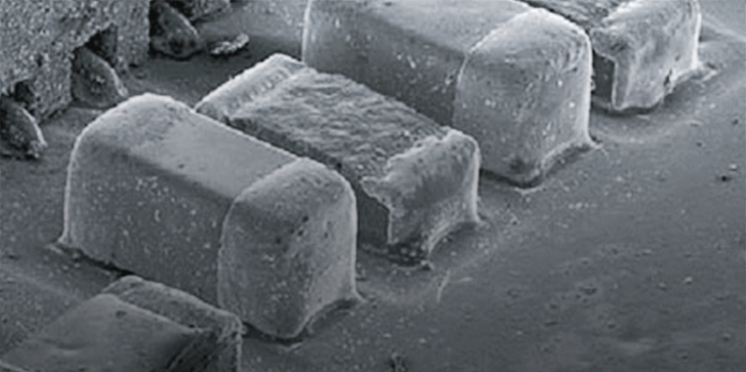phase contrast
phase contrast
Contrast produced by changes in phases of scattered waves. The HREM image is formed by the phase contrast. When a specimen is very thin, it is approximated that electron waves hardly suffer absorption but change only their phases (weak phase object approximation). If an aberration-free lens is used to cause interference between transmitted and scattered waves, no contrast appears on the ideal image plane. That is, the phase shift of the scattered waves does not cause the intensity variation in the image. The scattered waves undergo a phase shift of π/2 with respect to the transmitted wave. If the phase of the scattered waves is further shifted by π/2 in such a way that the amount of phase shift due to the spherical aberration of the electron lens is adjusted by the amount of defocus, the resultant phase shift of the diffracted waves becomes πwith respect to the transmitted wave. This phase change of the diffracted waves (π) is converted into the change of amplitude (not complex number but real number), producing contrast in the image due to the interference between the transmitted wave and diffracted waves. When an appropriate defocus amount is selected so that the phase of scattered waves is shifted by π/2 over the wavenumber range as wide as possible and the amplitudes of the waves become as large as possible, the structure image is obtained.

High-resolution TEM image of a single-layer graphene taken at an accelerating voltage of 80 kV.
Since the graphene is regarded as a weak-phase object, the image contrast of the graphene reflects the phase change of electrons scattered by carbon atoms. This image is acquired using an electron microscope equipped with a Cs corrector at a slight defocus to create the phase contrast.
Hexagonal grids of the graphene are seen in most parts. In the area enclosed by white dashed lines at the left, a lattice defect is seen. In the area enclosed by yellow dashed lines at the upper left, the graphene is seen to take an amorphous state.

High-resolution TEM image of a single-layer graphene taken at an accelerating voltage of 80 kV.
Since the graphene is regarded as a weak-phase object, the image contrast of the graphene reflects the phase change of electrons scattered by carbon atoms. This image is acquired using an electron microscope equipped with a Cs corrector at a slight defocus to create the phase contrast.
Hexagonal grids of the graphene are seen in most parts. In the area enclosed by white dashed lines at the left, a lattice defect is seen. In the area enclosed by yellow dashed lines at the upper left, the graphene is seen to take an amorphous state.
Related Term(s)
Term(s) with "phase contrast" in the description
Are you a medical professional or personnel engaged in medical care?
No
Please be reminded that these pages are not intended to provide the general public with information about the products.




